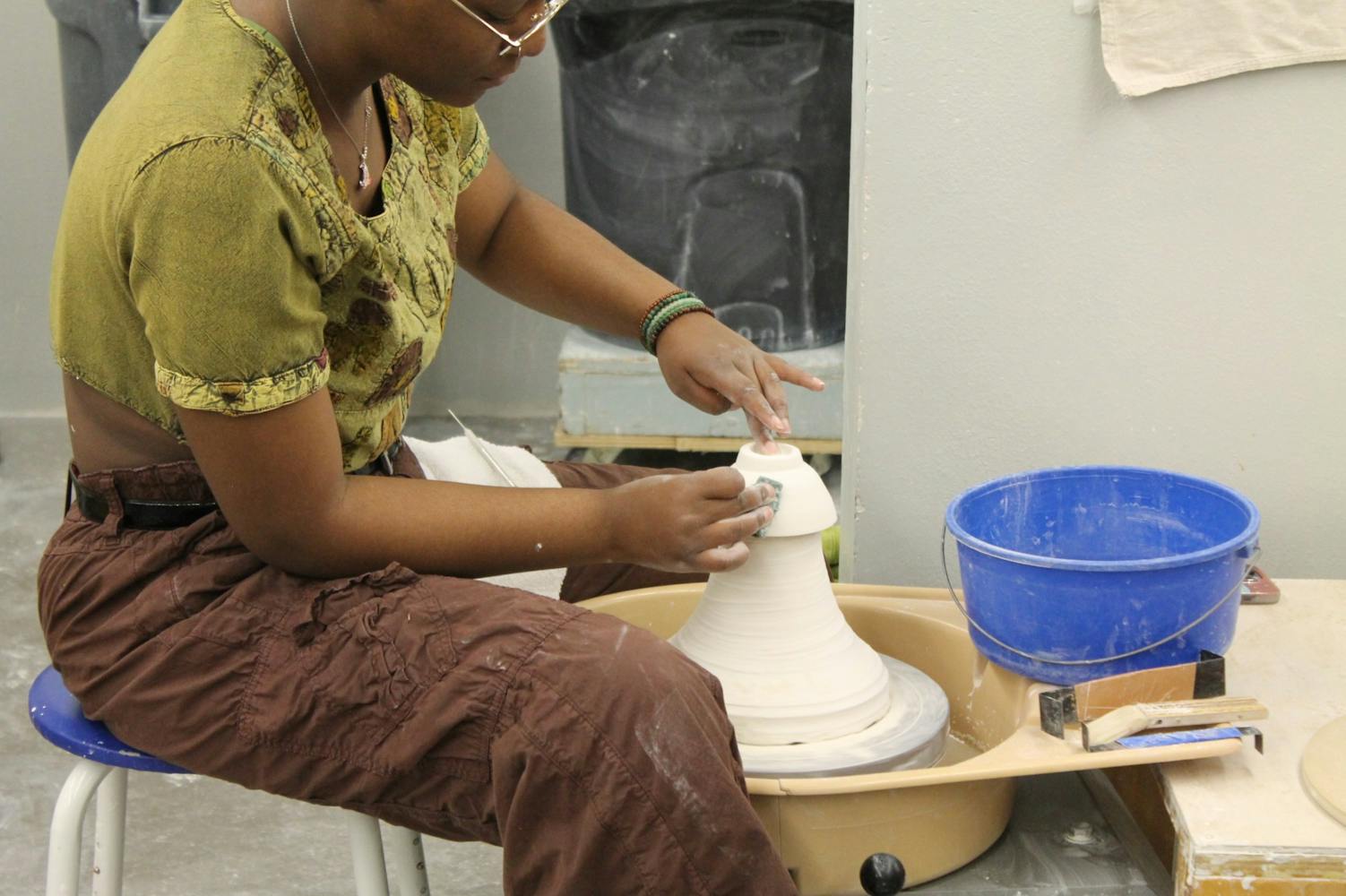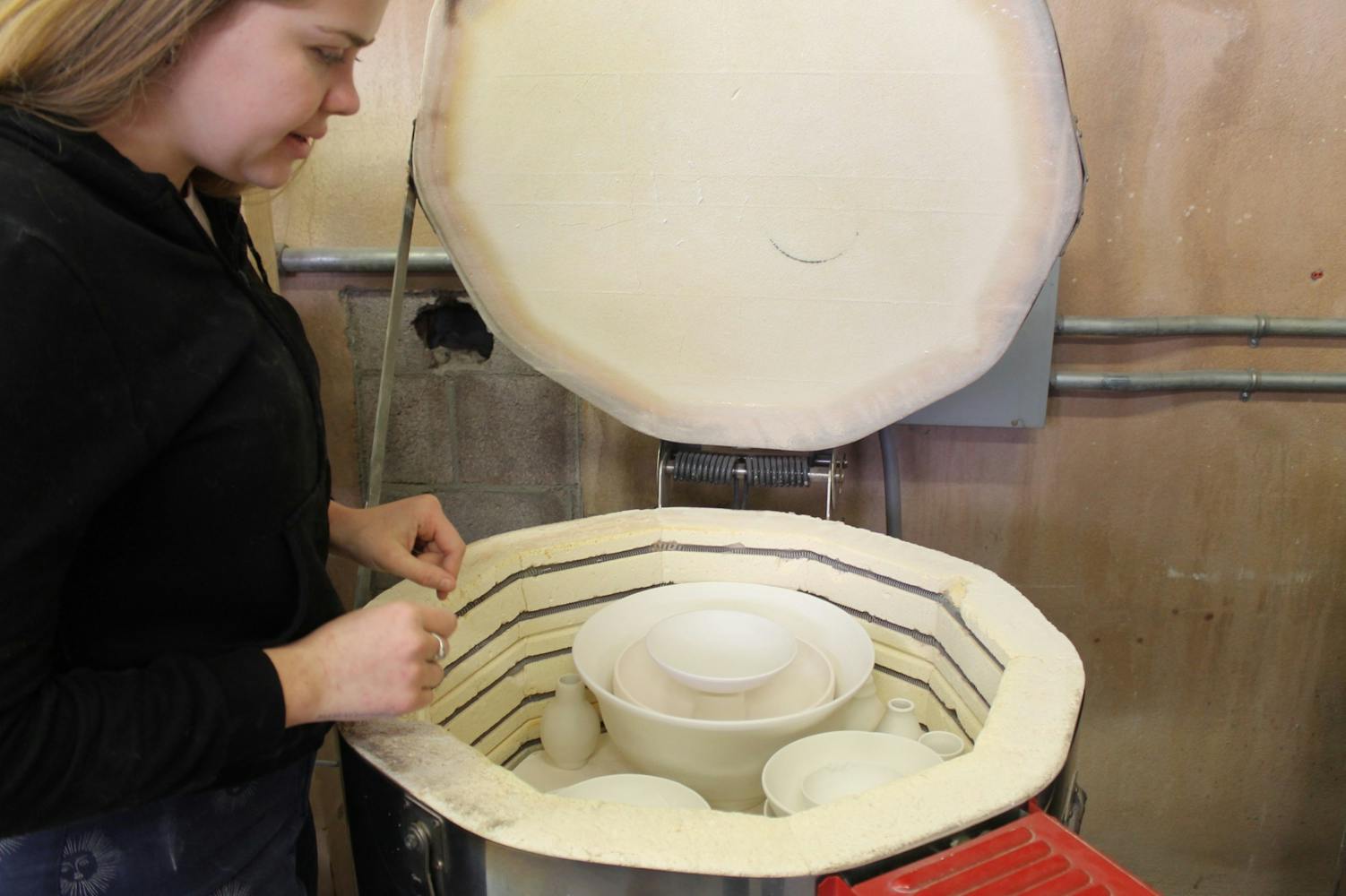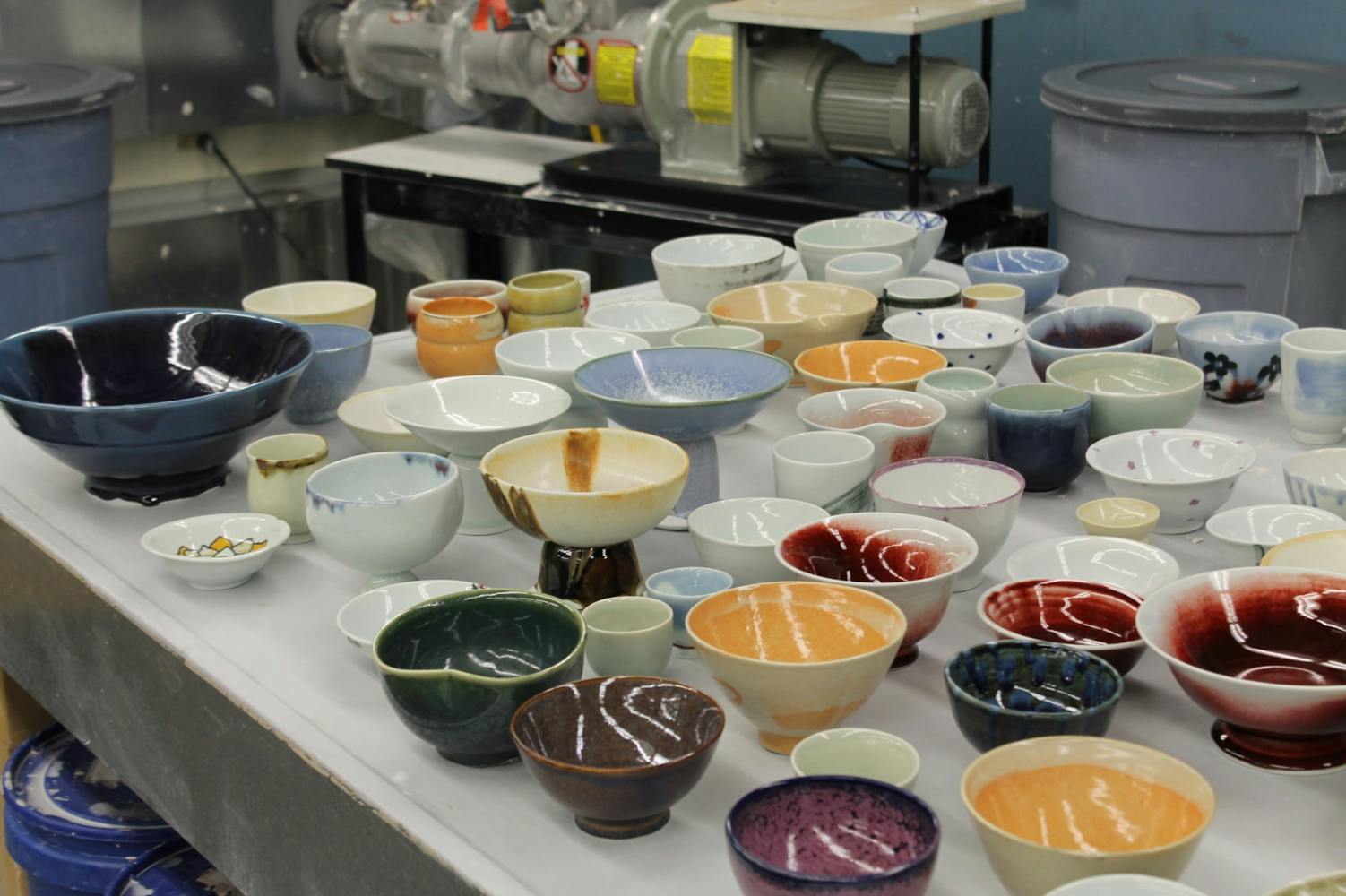Students at the Arita Porcelain Studio, located in the Art Building at the University of New Mexico, are unique in their study of the traditional 400-year-old Japanese art of Arita porcelain; UNM is the only university in the United States with faculty authorized to instruct in this artform outside of Japan. Arita porcelain is moreso about the practice and tradition that goes into the process rather than the final product, according to Kathy Cyman, the professor of practice who leads the program.
Arita porcelain is a practice out of Arita, Japan, a town in the Saga prefecture, where Izumiyama Kaolin Quarry was founded, the first source in Japan for the raw material that goes into making porcelain clay.
The program has existed at the University of New Mexico for 43 years, thanks to Manji Inoue, a sensei in Arita porcelain who first taught Kenneth Beittel, a professor from Penn State, the art of Arita porcelain. Beittel’s student Jim Subrek, who also studied under Inoue, taught the art at UNM, where Cyman was introduced to it in 1988. This legacy denotes the tradition of Arita porcelain, which, according to Cyman, is passed down because people are called to the art.
“You can't bestow it on anybody. There has to be a connection, a deep regard, and not wanting to do anything else; this is how (you want) to live your life,” Cyman said.
Since the practice was brought to the University, Inoue has visited 12 times, and Japan has sponsored five UNM students as artists in residence to learn the practice in Arita; Cyman herself has been five times.
The porcelain dishes made are the most durable form of pottery to, according to Cyman. This is due to how the clay is thrown, through a process called wedging, which ensures the clay is without air bubbles. This is done in a clockwise motion, opposed to the common practices of Western pottery. Along with the glaze which sinks into the clay rather than just lying on top, this process is something that has been developed over centuries, according to Adam Padilla, who is poised to take over Cyman’s role when she retires.
“They went through all the things that don't work. The steps that we use are specifically tailored for this material … Every little thing that we do has a reasoning behind it,” Padilla said. “The better that you make something in previous states helps you further along the line.”
The practice of Arita porcelain focuses on crafting the inside of the piece, as opposed to how Western potters use clay, according to Padilla. This allows one to focus on the part of the dish that is used. The durability the process creates allows for a key tenant of the practice — the dishes are meant to be used. To Padilla, this aspect is a special part of the process.
“When you get to be in those instances where people can appreciate what you're making, and you see your friends or relatives like using your dishes, it feels good to have something to talk about, something to connect with,” Padilla said. “Eating with people is one of the most social things that we do.”
The process of creation is something that people are often forgetful of with mass-produced goods that have large carbon footprints and are potentially created by underpaid laborers in poor conditions, according to Cyman.
To offset carbon emissions, Cyman and the studio take intentionality in the process and seek to be environmentally conscientious. These efforts include predominantly using an electric kiln and reducing the use of the gas kiln from five to eight times a year down to two.
A process to recycle scrap clay was also started in studio by Padilla, who pulled techniques from a Pueblo pottery class.
Get content from The Daily Lobo delivered to your inbox
“I took inspiration from that class to better clean our clay. I have the ambitions of taking porcelain a step further,” Padilla said.
The history of Native American pottery in New Mexico might also be part of the reason the practice of Arita porcelain has developed a life in the state, according to Cyman.
“I think (Arita porcelain) has resided here because of the parallels to Pueblo pottery and Native American culture. It's in the air, even though they’re so different materials,” Cyman said. “There's a high regard for process.”
The location in New Mexico is significant in other ways as well: Arita is as close in distance to Nagasaki, where the United States dropped an atomic bomb, as Santa Fe is to Albuquerque. New Mexico is also where the first atomic bomb was developed; this fact is not lost on Cyman.
“I tell the students, ‘There's hope, there's hope for one of the highest artforms in Japan to come to UNM’,” Cyman said.
Both Cyman and Padilla expressed deep respect and understanding for the cultural significance and importance of the relationship between the Arita porcelain studio and Sensei Inoue.
“It's just super rare, having (this) cultural exchange. Inoue is a ‘national living treasure’ of Japan — he is (an Important Intangible) Cultural Property,” Padilla said. “So for him to come to the place the atomic bomb was created is a crazy, crazy thing. I'm just lucky to be a part of it.”
The community fostered in the class is another key part of the process. The nature of working together and the tradition of tea breaks (allowing students a moment of rest in class), play an integral role, according to Cyman and Padilla.
“All the moments that we are in here throwing, we're connected to the process of it physically; it pulls us in emotionally and intellectually at the same time,” Cyman said.
The relationship between the artist and the clay itself is another key part of the work, Cyman said.
“The nature of clay is that it changes; it transforms through the time you touch it. It gets out of the kiln and, if we're not connected to it, it won’t turn out,” Cyman said. “There's a spiritual component to it.”
Maddie Pukite is the managing editor at the Daily Lobo. They can be reached at managingeditor@dailylobo.com or on Twitter @maddogpukite









